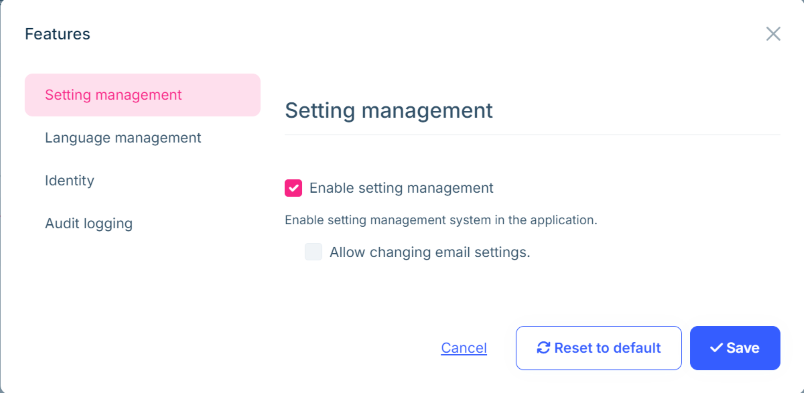Microservice Solution: Feature Management
You must have an ABP Business or a higher license to be able to create a microservice solution.
The Administration microservice is responsible for managing features. It is used by all the services and applications in the solution. This document explains how feature management works in the microservice solution. It's similar to the permission management. When we send a request to /api/abp/application-configuration, the gateway application forwards the request to the Administration microservice. The Administration microservice returns the application configuration, which includes the features for the current user tenant. You can see the details of the application configuration here: Application Configuration.
Since Feature Management is a fundamental feature module, each microservice depends on the Volo.Abp.FeatureManagement.EntityFrameworkCore or Volo.Abp.FeatureManagement.MongoDB package. These modules provide the necessary infrastructure (such as IFeatureStore) to check features. Additionally, the Administration microservice depends on the Volo.Abp.FeatureManagement.Application, Volo.Abp.FeatureManagement.HttpApi packages to manage features.
Feature Management
The Administration microservice provides a set of APIs to manage features. The features are defined in each microservice, and when a microservice starts, it registers its features to the related feature definition tables if SaveStaticFeaturesToDatabase option is true for FeatureManagementOptions. Since the default value is true, this behavior is ensured. After that, you can see the features from the Feature Management Dialog for related provider such as Tenant or Editions.

When you define a new feature to a microservice, you need to restart the microservice to register the new feature to the feature definition tables. Afterwards you can see the features from the Feature Management Dialog.
Administration Service Feature Management Option
SaveStaticFeaturesToDatabase default value is true and it is used to save the static features to the database. Each microservice already adds their feature definitions to the related table. However, there is also another option IsDynamicFeatureStoreEnabled, which is used to enable the dynamic feature store. We need to enable this option only for the Administration microservice, because the Administration microservice is the only service that manages the features. Other services and applications use their own feature definitions.
You can see this option in the ConfigureFeatureManagement method of the Administration microservice module:
private void ConfigureFeatureManagement()
{
Configure<FeatureManagementOptions>(options =>
{
options.IsDynamicFeatureStoreEnabled = true;
});
}
Creating a New Feature
You can define new features in the MicroservicenameFeatureDefinitionProvider in the Contracts project for the related microservice. Since existing microservices uses the monolith module approch all featuers comes from related module. However, you can create new features if you need.
For example;
public class FormsFeatureDefinitionProvider : FeatureDefinitionProvider
{
public override void Define(IFeatureDefinitionContext context)
{
var group = context.AddGroup(FormsFeatures.GroupName,
L("Feature:FormsGroup"));
group.AddFeature(FormsFeatures.Enable,
"true",
L("Feature:FormsEnable"),
L("Feature:FormsEnableDescription"),
new ToggleStringValueType());
}
private static LocalizableString L(string name)
{
return LocalizableString.Create<FormsResource>(name);
}
}


























































